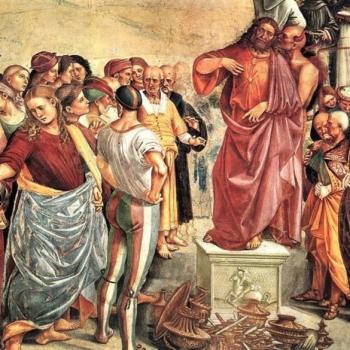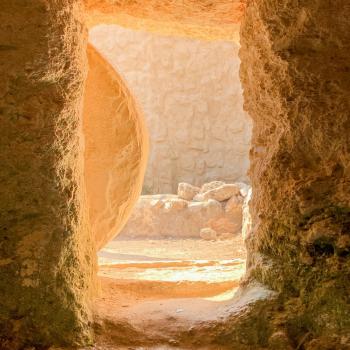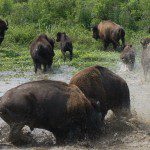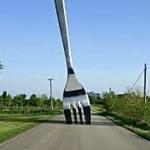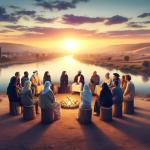
Concern for the breakdown of rural life is old. Since at least the time of the Roman poet Virgil, rural communities have been imagined both as idylls where the moral formation of the nation takes place alongside the cultivation of the earth, and as places threatened by the might and muscle of modernity. In the popular imagination, rural communities are simultaneously a source of wholesomeness and decay.
One way this has played out is in an offhand dismissal of rural communities as places where people might actually choose to live. Take the recent kids movie Zootopia. The goal of any bright-eyed and ambitious country critter is to make it big in the diverse city. It’s a perfect mix of our culture’s narrative of movement combined with one of the last acceptable prejudices: the prejudice against rural people. Only carrot farming losers stay put in the sticks. If the foxes are right, rural places are for “dumb bunnies.”
In this long-running narrative of the West, civilization is urbanization. Cities are like nirvana: the enlightened go there. Already at the turn of the twentieth century, a movement was afoot to challenge this narrative and the widespread population shift to the city that accompanied it. No less a figure than Teddy Roosevelt weighed in, echoing concerns raised by his Country Life Commission. Writes President Roosevelt:
The great recent progress made in city life is not a full measure of our civilization; for our civilization rests at bottom on the wholesomeness, the attractiveness, and the completeness, as well as the prosperity, of life in the country. (Report of the Country Life Commission, 1909, p.9).
The Country Life Commission sought to make life in rural communities attractive, not just because that’s where the nation’s food came from, but because the countryside was also seen as the source of our moral fiber. As writer Kevin Lowe documents in his history of American agrarian movements, Baptized with the Soil, the Commission mobilized vast resources, both government and faith-based. Although the Country Life Commission succeeded in raising government awareness of the challenges of rural communities and made concrete progress in the form of rural electrification, improved roads, and land-grant universities with their county extension offices, the broader movement was hobbled by its mildly paternalistic structure: concerned city people making helpful suggestions on how country people could improve their lot. Inevitably, much of it came down to a simple formula: look and behave more like the city.
If there is a phenomenon of rural resentment, its locus is here: the prevailing sentiment that through force of numbers and a sense of superiority, the City is bossing the Country. The rhetoric of recently-ousted congressman Tim Huelskamp, who represents our predominantly rural district in Kansas, plays to this dichotomy. In one email to constituents, Congressman Huelskamp writes that “farm programs deserve less Washington control, regulation and cost” (Dec.17, 2013). In other words, the Capital should stop telling us rural Districts what to do. It has been a long-standing fantasy of some rural areas to create new, rural-dominated states, like eastern Washington and Oregon and their sometimes dream of “Cascadia,” a state (or maybe a country) split from their urban coastlines to determine its own future.
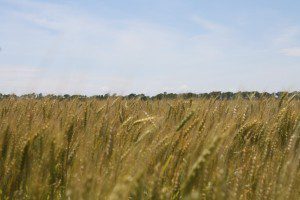
But contra narratives of rural resentment and decline is the simple fact that, despite 100 years of concern and a pervasive sense of crisis, rural communities persist. We’re still here. What’s more, people still choose to live in the country. We like our yards and gardens and chickens. We like knowing our neighbors. Sure, some people are trapped in rural areas by poverty and bad choices. But this is hardly any different from the ways people get trapped in urban blight or suburban sprawl. Poverty, not rurality, holds people back.
There’s a competing narrative, one testified to by the simple fact of the enduring presence of thriving rural communities. It’s the narrative of rural joy. People actually choose rural, and this in the face of centuries-deep currents tugging populations to the city.
One place I’ve seen this choice play out is in the surprising wave of youngish pastors called to serve rural congregations in my own Western District Conference of Mennonite Church USA. These are women and men in their thirties who have made an intentional commitment to rural ministry, often after significant experiences in the big city and overseas. They’ve tended their rural congregations–congregations bearing a profound sense of both loss and possibility–and harvested surprising fruits of transformation and revival. This past spring, I led a session interviewing a number of these pastors at a conference on the rural church held in Beatrice, NE.
In describing their dreams for rural church and community, many of these pastors hit agrarian notes of care for the land, the value of work, and the preeminence of local community. They’re committed to the life and health of place. Like Jacob, fleeing his brother Esau’s wrath and searching for a bride (Gen. 28), they’ve discovered that “the Lord is in this place, and I did not know it!” They’ve come to recognize, like generations of rural folks before them, that no place is “in the middle of nowhere.” It’s all somewhere to God.
These are signs of joy, markers pointing toward a very different narrative than that of rural decline and resentment. We like it out here. We choose the rural life.
We claim Psalm 65:13, rural praise lifted to the God who embraces the whole earth: “The meadows clothe themselves with flocks, the valleys deck themselves with grain, they shout and sing together for joy.”




